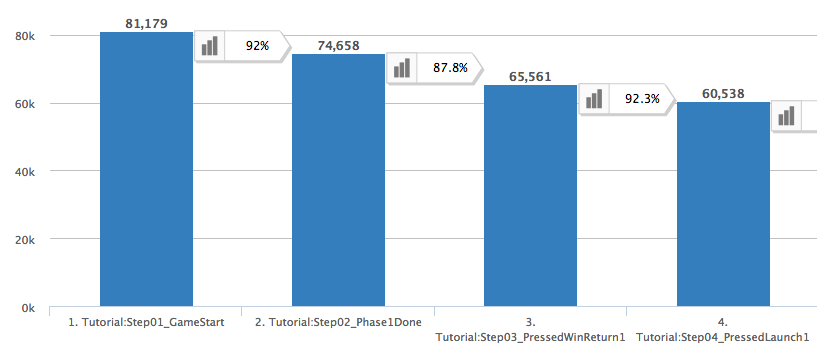How to analyze indie games?
The Gamasutra resource regularly publishes articles by developers, art directors and game designers about the industry. We choose the most interesting ones and share them with you.
Game designer Dylan Jones, who has a series of Battle Group games in his portfolio, shared his view on analytics in indie games.
As a rule, the main purpose of game analytics is to assess the degree of user engagement and retention and, if necessary, help increase them.
Here are a few rules:
1. Don’t pay for analytics
It’s no secret that analytical companies make money on your data. Therefore, you are a valuable customer who deserves the best in exchange!
There are dozens of free analytical resources to choose from – it all depends on the platform you are developing for.
If you are an indie developer, you most likely work for Unity. Try Game Analytics – it’s easy to integrate into the game.
Are you familiar with Google Analytics? You can try their open beta version for Unity. Unity itself is also developing an analytical service.
Before paying for analytics and data collection, I would recommend hiring a professional. However, if you are crazy about cool charts and simple controls, then I recommend Upsight and MixPanel.
2. At first, try to keep track of unambiguous data
At the very beginning of your work, you will inevitably “dig in” the data. I recommend beginners to track only those moments that were not influenced by extraneous factors. For example, based on whether a player has started training and finished it, it is possible to draw unambiguous conclusions.
3. Track player training
The first experience a player gets from your project is one of the most important parts of the game, so it needs to be monitored as closely as possible to avoid surprises. It is most convenient to do this using the example of the first five minutes of gameplay and tutorial.
For example, in the game Battle Group 2, we consistently track dozens of key points. Here are the weekly statistics of our project, obtained using Unity Analytics Beta. It reflects how users are eliminated at various stages of the game.
Once you understand the analytical service, you will be surprised how easy it will be to understand in which part of the game users did not master the tutorial, where they got tired of waiting or the task seemed too difficult. The smaller the distance between the key action points, the more accurate your data will be.
Fix these shortcomings – and users will get a much more enjoyable game, and you will get higher retention rates.
4. Do not abuse A/B testing
A/B testing allows you to try different approaches to the same problem and understand what the players like best. Is it right (from the point of view of gameplay and profitability) to force the player to fight with the first boss of the level, giving him additional health? You can divide the experimental group in two and see which one will spend more / will play longer.
A/B testing allows you to solve other, not so important issues. For example, what color should the “Buy” button be so that it is clicked more often? Anyway, there is no need to repeat A/B testing of the same stage indefinitely, because the further away, the less accurate the result will be. Got a 5% improvement? Great, run the next test.
5. Don’t compare yourself to the giants of the industry
It makes no sense to compare yourself with Supercell or other large companies (unless, of course, you are trying to advertise yourself to someone or are looking for additional motivation). They spend millions of dollars to increase LTV, so it’s just not constructive to compare yourself with them. Not to mention the fact that the data that they usually find it necessary to make public is often changed in a more attractive way – for investors.
Set your own goals and work on them.
Other materials on the topic:
